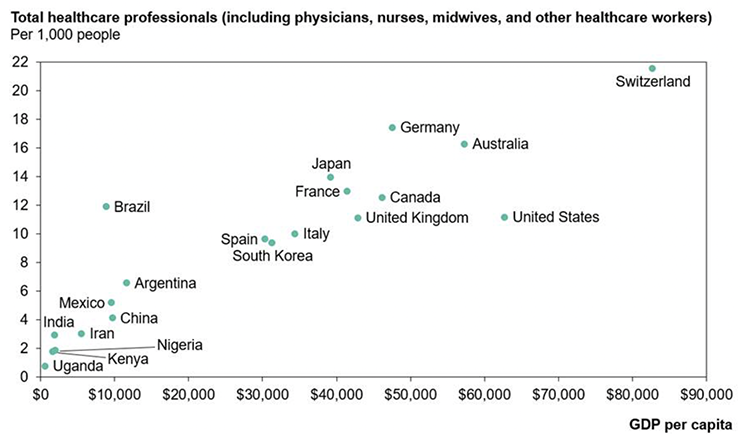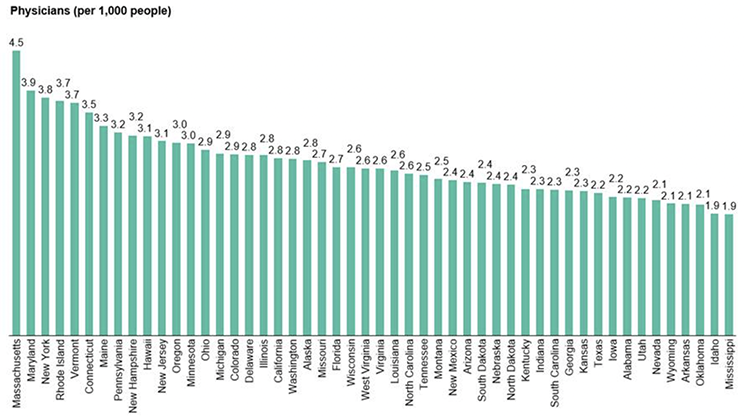Some of the regions hit hardest by COVID-19 are facing a shortage in doctors, nurses, and other healthcare workers at the front line of treatment. The shortages in these areas may be exacerbated if the disease reduces the numbers of workers available to sustain critical healthcare activities. Countries like Italy and the United States have begun tapping into medical students and retired professionals to provide extra support as current resources become strained, and virus-induced shortages have manifested in Spain and are beginning in the United States.
Y Analytics compiled data from the World Bank and the World Health Organization to create an aggregated listing of healthcare workforce density for multiple countries.
Health Personnel by Country

Healthcare worker density is an important measure of health system access and quality, and is typically measured as the number of healthcare workers per 1,000 people. The Joint Learning Initiative (JLI), launched by the Rockefeller Foundation, estimates that a country would need a minimum of 2.02 to 2.54 healthcare professionals per thousand people (including doctors, nurses, and midwives) to provide an adequate level of care under normal circumstances. Many developing countries, like Nigeria, Kenya, and Uganda, fall well below this threshold.
During a global pandemic, demand for care and healthcare workers can become even more pronounced as the shortage of professionals in specific specialties are particularly stark. Bayram et al. (2013) identified a list of specialties that would be most important in a pandemic response, including respiratory therapists, ICU nurses, non ICU nurses, pharmacists, and internists. A study of early results and responses from hospitals in Wuhan identified delays in intubation from limited staffing as a potential driver of deaths associated with COVID.
Density of healthcare workers can also be used to assess different regions’ preparedness for a pandemic within a given country. Becker’s Hospital Review compiles data on physician density for the 50 US states. Massachusetts, Maryland, New York, Rhode Island, and Vermont have the highest densities of physicians at over 3.5 physicians per 1,000 people, whereas Mississippi and Idaho have fewer than 2 physicians per 1,000 people.
As infections continue to spread, areas that have limited healthcare professionals may face the largest difficulty in handling the surge in demand for healthcare.
Physician Density by State

Sources
World Health Organization (2020)
World Health Organization (2006)
Becker’s Hospital Review (2019)
Society of Critical Care Medicine (2020)
Y Analytics aggregates credible findings from leading institutions and researchers. Our goal is to shine a light on the facts made available by content experts and present the implications of these facts. If you have recommendations for additional reputable data sources, insights to help us refine our analysis, or suggested research topics, please contact us at info@yanalytics.org.